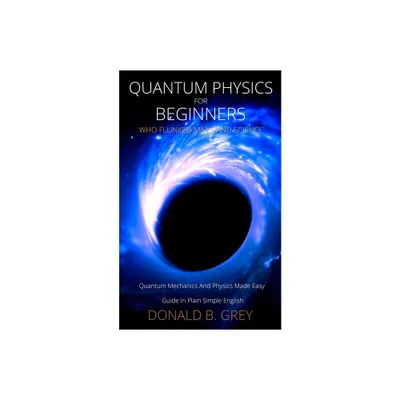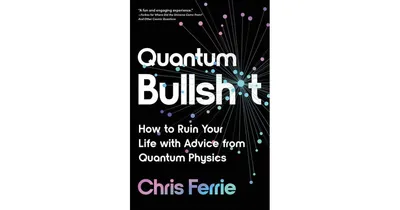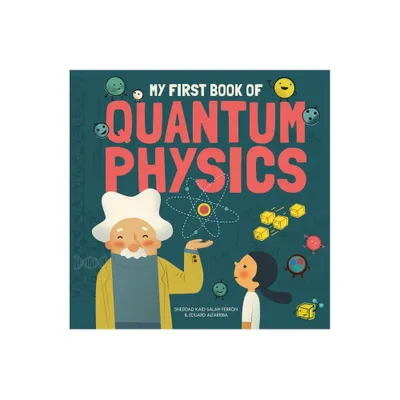Home
How the Hippies Saved Physics: Science, Counterculture, and Quantum Revival
Loading Inventory...
Barnes and Noble
How the Hippies Saved Physics: Science, Counterculture, and Quantum Revival
Current price: $20.42


Barnes and Noble
How the Hippies Saved Physics: Science, Counterculture, and Quantum Revival
Current price: $20.42
Loading Inventory...
Size: Audiobook
*Product Information may vary - to confirm product availability, pricing, and additional information please contact Barnes and Noble
"
How the Hippies Saved Physics
gives us an unconventional view of some unconventional people engaged early in the fundamentals of quantum theory. Great fun to read." —Anton Zeilinger, Nobel laureate in physics The surprising story of eccentric young scientists—among them Nobel laureates John Clauser and Alain Aspect—who stood up to convention and changed the face of modern physics.
Today, quantum information theory is among the most exciting scientific frontiers, attracting billions of dollars in funding and thousands of talented researchers. But as MIT physicist and historian David Kaiser reveals, this cutting-edge field has a surprisingly psychedelic past.
introduces us to a band of freewheeling physicists who defied the imperative to “shut up and calculate” and helped to rejuvenate modern physics.
For physicists, the 1970s were a time of stagnation. Jobs became scarce, and conformity was encouraged, sometimes stifling exploration of the mysteries of the physical world. Dissatisfied, underemployed, and eternally curious, an eccentric group of physicists in Berkeley, California, banded together to throw off the constraints of the physics mainstream and explore the wilder side of science. Dubbing themselves the “Fundamental Fysiks Group,” they pursued an audacious, speculative approach to physics. They studied quantum entanglement and Bell’s Theorem through the lens of Eastern mysticism and psychic mind-reading, discussing the latest research while lounging in hot tubs. Some even dabbled with LSD to enhance their creativity. Unlikely as it may seem, these iconoclasts spun modern physics in a new direction, forcing mainstream physicists to pay attention to the strange but exciting underpinnings of quantum theory.
A lively, entertaining story that illuminates the relationship between creativity and scientific progress,
takes us to a time when only the unlikeliest heroes could break the science world out of its rut.
How the Hippies Saved Physics
gives us an unconventional view of some unconventional people engaged early in the fundamentals of quantum theory. Great fun to read." —Anton Zeilinger, Nobel laureate in physics The surprising story of eccentric young scientists—among them Nobel laureates John Clauser and Alain Aspect—who stood up to convention and changed the face of modern physics.
Today, quantum information theory is among the most exciting scientific frontiers, attracting billions of dollars in funding and thousands of talented researchers. But as MIT physicist and historian David Kaiser reveals, this cutting-edge field has a surprisingly psychedelic past.
introduces us to a band of freewheeling physicists who defied the imperative to “shut up and calculate” and helped to rejuvenate modern physics.
For physicists, the 1970s were a time of stagnation. Jobs became scarce, and conformity was encouraged, sometimes stifling exploration of the mysteries of the physical world. Dissatisfied, underemployed, and eternally curious, an eccentric group of physicists in Berkeley, California, banded together to throw off the constraints of the physics mainstream and explore the wilder side of science. Dubbing themselves the “Fundamental Fysiks Group,” they pursued an audacious, speculative approach to physics. They studied quantum entanglement and Bell’s Theorem through the lens of Eastern mysticism and psychic mind-reading, discussing the latest research while lounging in hot tubs. Some even dabbled with LSD to enhance their creativity. Unlikely as it may seem, these iconoclasts spun modern physics in a new direction, forcing mainstream physicists to pay attention to the strange but exciting underpinnings of quantum theory.
A lively, entertaining story that illuminates the relationship between creativity and scientific progress,
takes us to a time when only the unlikeliest heroes could break the science world out of its rut.


















